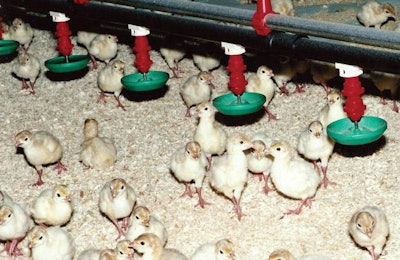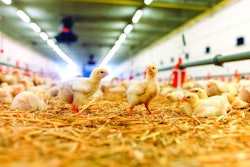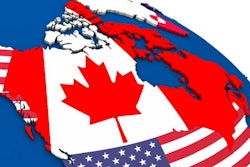
There was a time when the decisions turkey producers and veterinarians had to deal with concerning culling and euthanasia only dealt with health and welfare issues.
However, as the 2022 avian influenza (AI) outbreak continues to plague the U.S. turkey industry, concerns with the culling of young poults are now more frequently entering the conversation.
Brian Wooming, production veterinarian for Cargill, discussed the challenge during the Flocking Together to Address Poultry Welfare Challenges symposium, hosted by the University of Arkansas and the Center for Food Animal Well-Being on October 12.
Wooming said that Cargill spends a lot of time focusing on culling and euthanasia, and working with its growers on what birds to cull. Usually those decisions are ultimately based on whether the bird can get to the water or feed, or whether the bird can be “reasonably expected to heal without unnecessary pain or stress.”
However, as the presence highly pathogenic AI continues to be confirmed on commercial turkey operations, those farms must follow specific biosecurity rules. Before affected farms can be restocked, the birds that were there during the infection must be euthanized and disposed of, control zones around the infected farms must be lifted by animal health agencies, and the property must be fully disinfected before birds can be brought onto the premises.
Because of that, when breeding operations have new poults that are ready to be placed on a farm, there may not necessarily be enough places for them to go.
“When farms are taken out of the process, we can’t place birds onto those farms. But those poults are coming whether we are ready or not,” Wooming said.
“What do we do with these poults and how do we euthanize them? There are tough questions that we have to deal with. So, while that is not our standard operating procedure, … these are tough situations that will arise from time to time, and unfortunately now AI is coming with alarming frequency.”
Wooming said euthanasia and culling is never an easy topic to discuss. But conversations need to be taking place because AI has created a situation that the turkey industry – including Wooming himself – didn't expect to ever occur.
“I never thought in my career that I would see high path AI. It was a question on the board’s exam that I took in the 1990s that I thought I’d never have to deal with,” he said. “And now this is my third go-round, and it looks like I’m just going to have to live with it.”
To learn more about HPAI cases in commercial poultry flocks in the United States and Canada, see an interactive map on WATTPoultry.com.
Read our ongoing coverage of the global avian influenza outbreak.
Attend the 2022 Poultry Tech Summit
Join an exclusive international gathering of industry-changing innovators, researchers, entrepreneurs, technology experts, investors and leading poultry producers at the 2022 edition of Poultry Tech Summit on October 30 - November 1 in Atlanta, Georgia.
Attendees can expect the same groundbreaking innovation and insightful presentations that made the previous events well-attended with deep dialogue on new prospective solutions and next-generation technologies. Poultry Tech Summit focuses on the transition of innovative technologies into commercial applications to advance the poultry industry.

















